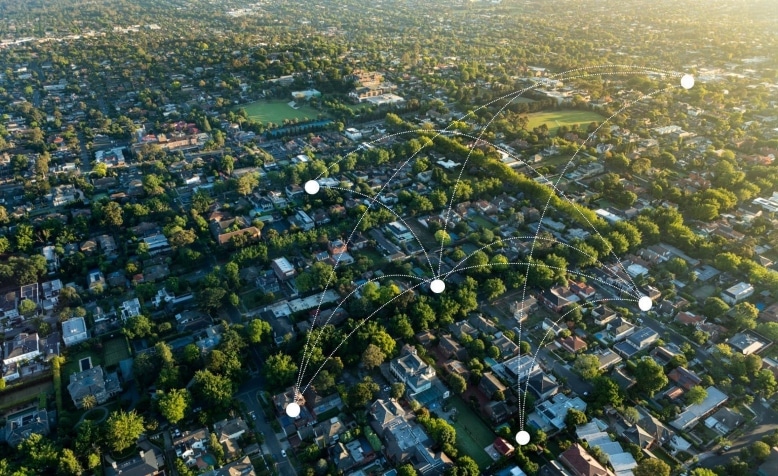Broadband Office Name: Oklahoma Broadband Office
BEAD Award Amount: $797.4 M
Oklahoma Broadband Director: Mike Sanders
Website: https://oklahoma.gov/broadband.html
Oklahoma BEAD Program Tracker
| State | IP Vol 1 Approval | IP Vol 2 Approval | Challenge Process Submission Closed | Submitted Challenge Results to NTIA | Challenge Process Results Approved by NTIA | 1-Year Subgrantee Selection Process |
|---|---|---|---|---|---|---|
| Oklahoma | Yes | No | N/A | N/A | N/A | N/A |
Oklahoma BEAD Program Information

Key Updates
Oklahoma has successfully obtained approval for their Initial Proposal Volume 1 and is currently awaiting NTIA approval for their Initial Proposal Volume 2.
The state has not yet initiated their State BEAD Challenge Process.
Oklahoma BEAD Program Plans & Maps
Oklahoma BEAD Program Initial Proposal Volume 2: Overview
*Information is subject to change. Oklahoma is awaiting official approval of Initial Proposal Volume 2 from the NTIA.
BEAD Long-Term Objectives
Objective 1: Expand Broadband Availability
- Provide broadband service to all unserved addresses in Oklahoma.
- Provide broadband service to all underserved addresses in Oklahoma.
Objective 2: Provide Support to Community Anchor Institutions (CAIs)
- Ensure broadband service is available to all CAIs in Oklahoma.
Objective 3: Encourage Broadband Affordability
- Collaborate with Internet Service Providers (ISPs) to make broadband more affordable.
- Encourage participation in affordability programs such as Lifeline and the Affordable Connectivity Program (ACP).
- Promote competition among broadband providers where applicable to drive down costs and improve service.
Oklahoma BEAD Program Project Area Design
The Oklahoma Broadband Office (OBO) will design project areas using the following approach:
Geospatial Analysis and Clustering:
- Contiguous Territories: Geospatial analysts will generate contiguous territories bounded by counties and other geographical features such as roadways, rivers, and rail lines.
- Clustering Technique: This technique will cluster the nearest unserved/underserved and unfunded Broadband Serviceable Locations (BSLs) that have a positive estimated Net Present Value (NPV).
Inclusion of Negative NPV BSLs:
- Balanced Clusters: Each contiguous territory will also include nearby BSLs with a negative estimated NPV, provided the overall cluster maintains a desirable, positive NPV.
- Comprehensive Coverage: This ensures that every unserved/underserved and unfunded BSL is accounted for within a territory.
Oklahoma BEAD Program Extremely High Cost Threshold
OBO will determine the Extremely High Cost Per Location Threshold (EHC) through the following process:
- Grant Application Analysis: The EHC will be established by analyzing the full range of grant applications received.
- Comprehensive Review: This review will consider various factors, including costs, project scope, and economic viability.
- Balanced Approach: The goal is to identify a threshold that balances the need for widespread broadband coverage with the financial constraints of deployment.
BEAD Deployment Subgrantee Selection
OBO is asking for the following preregistration evidence from subgrantees and compliance with: Financial capability, managerial capability, operational capability, technical capability, ownership info, public funding info, compliance with laws, cybersecurity/supply chain compliance, and BABA/EHP/NEPA/NHPA compliance.
Primary Scoring Criteria for Priority Broadband Projects
- 60 pts – Minimal BEAD Outlay
- 45 pts – Affordability
- 15 pts – Fair Labor Practices
Secondary Scoring Criteria
- 8 pts – Speed to Deployment
- 10 pts – Sustainability
- 6 pts – Local and Tribal Coordination
Additional Secondary Scoring Criteria for Other Last-Mile Projects
- 9 pts – Speed and Latency
- 7 pts – Low-Cost Option
BEAD Non-Deployment Subgrantee Selection
OBO will not allocate subgrants for non-deployment activities. All available funds and resources will be dedicated exclusively to broadband deployment efforts.
BEAD Eligible Entity Implementation
OBO will not implement any initiatives directly as the recipient. Instead, all initiatives will be carried out through subgrants to ensure efficient and effective use of funds.
BEAD Local, Tribe, and Regional Broadband Planning Process
Tribal Consultations (April to August 2023):
- Engaged with all 39 tribal nations through in-person and virtual meetings.
- Conducted two statewide consultations.
Leveraging Existing Structures:
- Utilized the Oklahoma Broadband Governing Board (OBGB) and Oklahoma Broadband Expansion Council (OBEC) for guidance and support.
Community Engagement:
- Let’s Get Digital: Oklahoma Broadband Tour: Visited 19 sites across the state.
- Diverse Group Engagement: Conducted focus groups, listening tours, surveys, and interviews with various communities.
- Awareness Campaigns: Implemented through meetings, surveys, emails, and media outlets (TV/Radio/Print).
Transparency and Communication:
- Established clear policies for transparency via the OBO website, emails, and monthly updates to OBGB and OBEC.
Digital Equity Coalition:
- Formed a coalition to address and promote digital equity across the state.
BEAD Labor Standards & Protection
OBO requires all BEAD subgrantees to submit the following information:
A record of past compliance with federal/employment laws:
- Must address info on deployment projects within the last 3 years.
- Certification form from an Officer/Director level employee of past compliance.
- Written confirmation that subgrantee has disclosed any violations from contractors within the last 3 years.
- Discussion of workforce plan
Plans for ensuring compliance with federal/employment laws:
- How subgrantee will ensure compliance in its labor/employment practices.
- Info on applicable wage scales, wage, and overtime practices for each class of employee expected to be involved in physical construction of the network.
- How subgrantee will ensure implementation of workplace safety committees.
- Comply with the Prevailing Wages Act.
- Other items as outlined in the BEAD NOFO.
BEAD Minority Business Enterprises / Women’s Business Enterprises / Labor Surplus Area Firms Inclusion
Strategies to Encourage Participation:
- Solicitation Lists: Place qualified Minority Business Enterprises (MBEs) and Women Business Enterprises (WBEs) on solicitation lists.
- Targeted Solicitation: Ensure MBEs and WBEs are solicited whenever they are potential sources.
- Dividing Requirements: Divide total requirements into smaller tasks or quantities, when economically feasible, to maximize participation by MBEs and WBEs.
- Delivery Schedules: Establish delivery schedules that encourage participation by MBEs and WBEs.
- Support Services: Utilize the services and assistance of organizations such as the Small Business Administration and the Minority Business Development Agency of the Department of Commerce.
Key Programs and Resources for MBEs, WBEs, and LSFs:
- Minority Business Certification Programs:
- Oklahoma Department of Transportation (Disadvantaged Business Enterprise)
- Oklahoma Department of Commerce (Women-Owned Business Certification)
- City of Tulsa (Small Business Enterprise Program)
- Tribal Employment Right Ordinance (TERO) certification program
- Chambers of Commerce: Collaborate with local chambers of commerce.
- Oklahoma Small Business Development Centers: Provide business development support and resources.
- REI Women’s Business Center: Offer resources and support specifically for women-owned businesses.
- SCORE Oklahoma City and SCORE Tulsa: Provide mentoring and support for small businesses.
BEAD Cost & Barrier Reduction
1. Promoting the use of existing infrastructure.
2. Promoting and adapting dig-once policies.
3. Streamlining permitting processes.
4. Streamlining cost-effective access to poles, conduits, and easements.
5. Streamlining rights of way, including the imposition of reasonable access requirements.
BEAD Low-Cost Broadband Service Option
OBO proposes the following criteria for a low-cost broadband option:
- Cost:
- $60 per month or less, inclusive of all taxes, fees, and charges for subscribers not residing on Tribal Lands.
- $75 per month or less for subscribers residing on Tribal Lands.
- Affordable Connectivity Program (ACP):
- Allows end users to apply the ACP benefit subsidy to reduce the service cost.
- Requires all subgrantees to participate in the ACP or any successor program.
- Service Specifications:
- Provides speeds of at least 100/20 Mbps.
- Ensures latency of 100 milliseconds or less.
- Is not subject to data caps, surcharges, or usage-based throttling.
- Upgrade Option:
- If the applicant later offers a low-cost plan with higher speeds, eligible subscribers can upgrade at little to no additional cost.
BEAD Middle-Class Affordability
OBO anticipates that the implementation of the BEAD program will enhance broadband affordability for all residents. The main strategies expected to drive this outcome are:
- Increasing Competition:
- By expanding broadband availability across Oklahoma, the BEAD program will stimulate competition among Internet Service Providers (ISPs). Increased competition is expected to lead to better pricing and service options for consumers.
- Special Pricing for Low-Income Households:
- BEAD subgrantees will be required to offer special pricing arrangements for low-income households. This will increase the overall number of subscribers, enabling subgrantees to spread out fixed network costs over a larger customer base.
- The ability to distribute these fixed costs over more customers will reduce the necessary broadband price for subgrantees to break even, thus lowering prices for all users.
